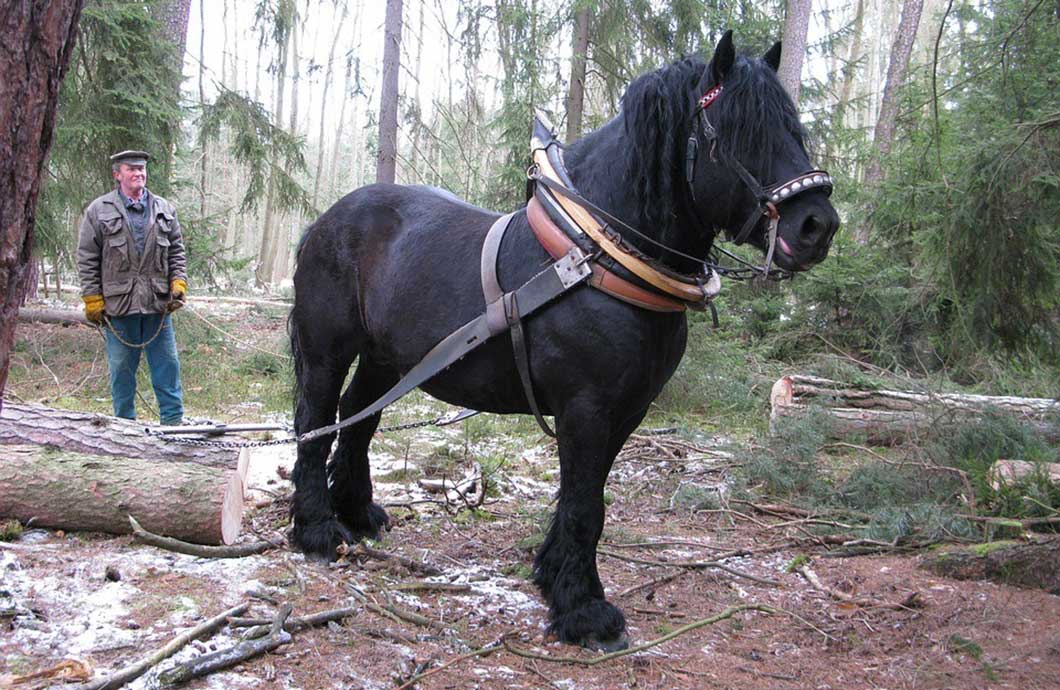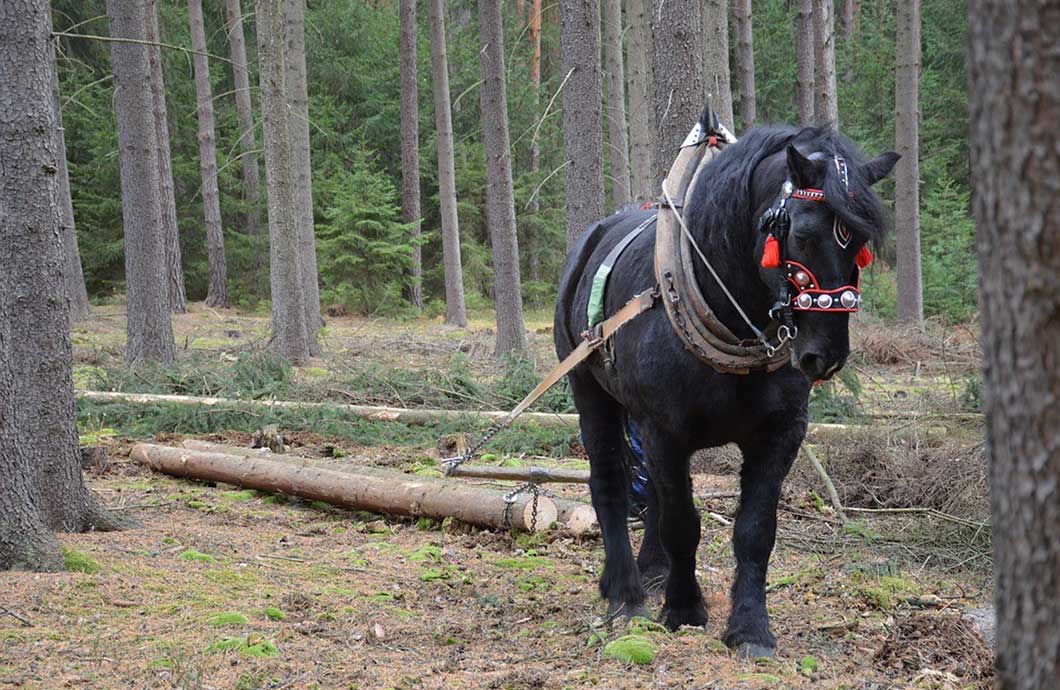Some forestry workers around the world are ditching their heavy equipment and
embracing draft horse logging as a low-cost and lucrative forestry operation...
or are they?
One thing is for certain—it is possible to substantially scale back on skidders and harvesters in favor of horse-pulled logs and still generate a sizeable profit. That’s why, from
Ireland to
America, many are successfully logging with horses.
Let’s take a closer look at some of the reasons why horse logging is making a resurgence.
Reason #1: Low Overhead and Less Equipment
There’s no question that draft horse logging involves much less financial risk than relying on modern machinery, and this is what seems to have revitalized the alternative industry. The average price for a new workhorse is only $3,000 compared to about $500,000 for a new piece of
logging equipment – and that’s not even comparing the cost of horse feed to diesel fuel, or simple vet bills to expensive replacement parts. Also, a horse offers around six years of full-time service and can be bred, while a pair of skidders, unfortunately, will never mate (no matter how long they are left alone).
 Meet the competition.
Meet the competition.
With that said, most horse logging operations still use at least one piece of heavy equipment for loading the logs onto transport vehicles. A
Virginian horse logger reports that his team of horses can pull 3,000 pounds using a specialized two-wheel cart, at which point he uses a
skid steer to take it to market. The most dedicated loggers, however, simply have a chainsaw and a pick-up truck.
Reason #2: Less Work, More Money
Horses obviously can’t compete with the large output of heavy logging and forestry equipment, but the low cost of draft horse logging means that they don’t have to. One
horse logger in New Brunswick, Canada reports that he only has to make 10 cords of wood a week to recoup his expenses, which only takes an acre of land to gather. His machine-using competitors, on the other hand, have to make upwards of 300 cords to stay in business, burning through 30 acres a week just to justify their expenses.
Some machine-based logging operations have to keep going 24 hours a day to earn their money back, which also costs extra in terms fuel and manpower. Horse logging operations, however, use much smaller crews to achieve just as much, economically-speaking. There’s less hours involved, less employees to split the profits with, and the landowners can be paid more quickly.
Reason #3: Increased Forest Access
Streams, brooks, historic preserves and research sites are off-limits to
skidders and
yarders, but not to horses, who weigh much less and have a footprint that will not disturb the topsoil. Whereas most logging equipment needs around 10 feet of clearance at minimum, a horse only needs 3 feet, and they can also easily climb areas that are too steep or uneven for heavy equipment. This allows draft horses to reach areas that large machines cannot, and as a result, they can gain access to the highest quality logs from regions that have remained undisturbed for ages.
 Draft horse logging in general is meant for small-to-medium forests that are no more than 200 acres, but it makes the most out of the small amount of land involved.
Draft horse logging in general is meant for small-to-medium forests that are no more than 200 acres, but it makes the most out of the small amount of land involved.
Reason #4: A Green Reputation
Biodiversity and sustainability are major selling points within the draft horse logging industry, and proponents are quick to tout the environmental benefits over modern forestry equipment.
Horses restore the forest by fertilizing the earth with their waste. They also preserve and benefit fragile ecosystems by causing minimal compaction and damage to roots, along with spreading seeds across the forest floor in the wake of the logs they drag.
Also, by selecting only the weakest trees to be removed, logging with horses ensures that the strongest trees remain standing – which ultimately results in a healthier forest. Heavy logging equipment like
harvesters and
feller bunchers sometimes indiscriminately cuts down or damages the stronger trees along with the weaker ones, so from an environmental standpoint, logging with horses has much less of a negative impact on the forest – and that’s something landowners are always looking to hear.
Is Logging With Horses The Way of the Future?
Horse logging is making a comeback for now, but do you think this method will last for much longer? Let us know on
Facebook or
send us an email, especially if you or anyone you know have experienced success with horse logging!